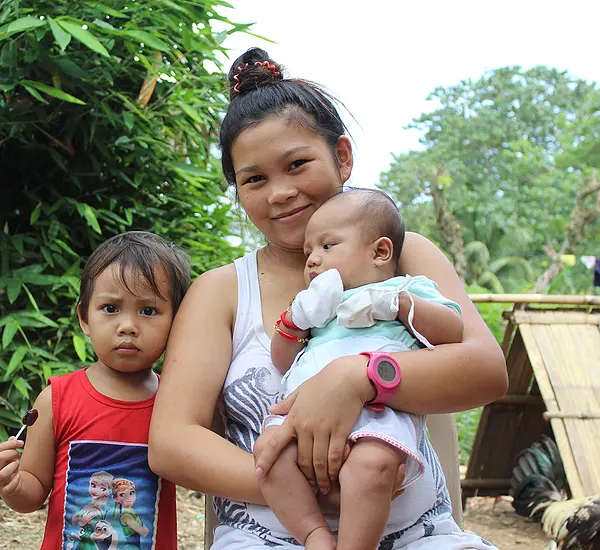
This is the third blog in our series, "The Time is Now: Investing in Adolescent Health", which shares insights from RTI experts on the importance of integrated and holistic approaches to improving adolescent health outcomes, and discusses successful interventions that address those needs around the world.
Improving Adolescent Sexual and Reproductive Health is Key to Delivering on the Promise of Universal Health Coverage
There are 253 million adolescents living in India – the largest share of adolescents in the world. Child marriages and early childbearing are common in the country, with one in four adolescent girls married before turning 18 and most giving birth before completing adolescence, resulting in poor health outcomes for both the mother and children. Adolescents also face multiple barriers in accessing sexual and reproductive health (SRH) services and information – ranging from societal stigma, to inadequate privacy and inconvenient operating hours. Ensuring that adolescents have access to quality SRH services is an important part of working towards universal health coverage.
The Government of India recognizes the importance of investing in the health of its young people, and in 2014 it established the National Adolescent Health Programme (Rashtriya Kishore Swasthya Karyakram [RKSK]), which focuses on addressing sexual and reproductive health, nutrition, mental health, injuries and gender-based violence, substance misuse, and noncommunicable diseases. Its peer education model, introduced as a key component of the programme in 2017, selects, trains, and supports young leaders to lead informational sessions with their peers and engage with their communities. These young leaders conduct weekly one-to-two-hour sessions with small groups of adolescents to inform them about existing SRH services and how to optimally utilize them, reinforcing the creation of safe social spaces, friendship networks, and youth empowerment.
Peer education is not a new programmatic intervention, especially for SRH. It is widely used globally as an intervention for promoting the SRH of youth, due to the rationale that young people can more easily discuss sensitive issues with their peers than with adults.
Investing in peer education is a great first step towards achieving improved health related outcomes for adolescents – however, we still lack conclusive evidence globally on whether and how it is most effective in improving SRH. If we are to achieve universal health coverage, it is imperative that we better understand how to best leverage peer education as a strategy to engage young people.
Examining the Effectiveness of Peer Education as an Intervention in India
At RTI, we are working to fill this gap in understanding. We recently co-hosted a webinar with Dasra India where we shared recent research on this subject specific to the Indian context. This included a discussion of the systematic review we published in Sexual and Reproductive Health Matters, which gave insight into the knowledge, attitudinal and behavioral outcomes affected by peer education, as well as the inputs, coverage, content, and context of these interventions in India.
We found mixed results in our review, with only some of the multi-component and stand-alone initiatives affecting improved SRH outcomes. We also found that peer education was more effective in improving knowledge and attitudes than in promoting healthy SRH behaviors among the adolescents. Additionally, we noted that there is no standardized model of peer education in India – each program varied greatly in relation to the content, delivery, and context. For example, many of the programs we reviewed combined peer education with other interventions such as health service delivery, sports coaching, or vocational training for adolescents. Lastly, the coverage and quality of peer education programs was difficult to assess due to a scarcity of data. This is due to inconsistent monitoring of these programs, leading to issues of incomplete data and no formal mechanism for corrective action.
Our review did not address the optimal conditions for success of peer education. Therefore, we believe future research is needed to provide additional evidence for how to best design effective peer education models.
Opportunities for the Future
Despite these mixed results, we still believe that peer education has a place in an overall response to improving the SRH of young people due to its ability to empower adolescents and influence decisions that affect their health and well-being. The challenges outlined above pave their way to numerous opportunities such as using innovative practices and alternative approaches to ensure that no adolescent is left behind. For instance, some states are using independent surveys and mechanisms such as video conferencing and WhatsApp for planning and monitoring with some using technology-based information, education and communication (IEC) materials for community education.
Going forward, programming for young people in India and globally will require high quality research and evidence-based implementation to drive the future discourse of action on peer education. Investments in building quality and equitable health systems that empower young people will be crucial to ensuring we leave no one behind.

We Cannot Leave Adolescents Behind on the Path to Health for All
Cristina Bisson and Ishu Kataria share several holistic ways that we can overcome some of the health barriers that adolescents face so they can become healthy, productive and engaged adults.

Shining a Spotlight on Adolescent Mental Health in Low- and Middle-Income Countries
Ishu Kataria, Erica Kocher, and Rachel D. Stelmach offer their insights on best practices for improving mental-health interventions for adolescents in light of the COVID-19 pandemic and other challenges.

